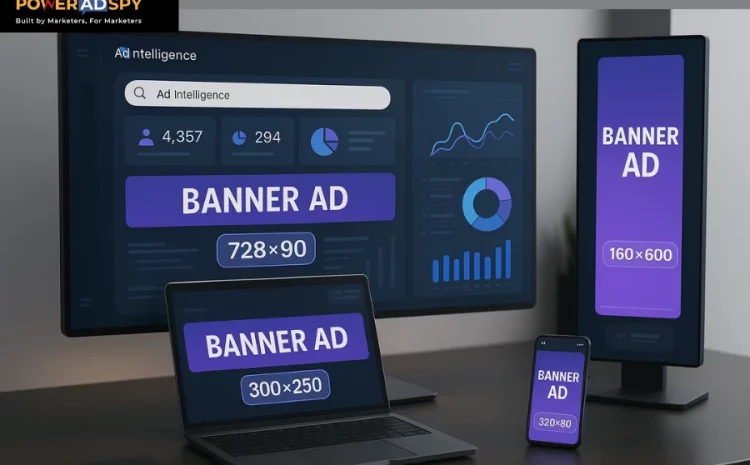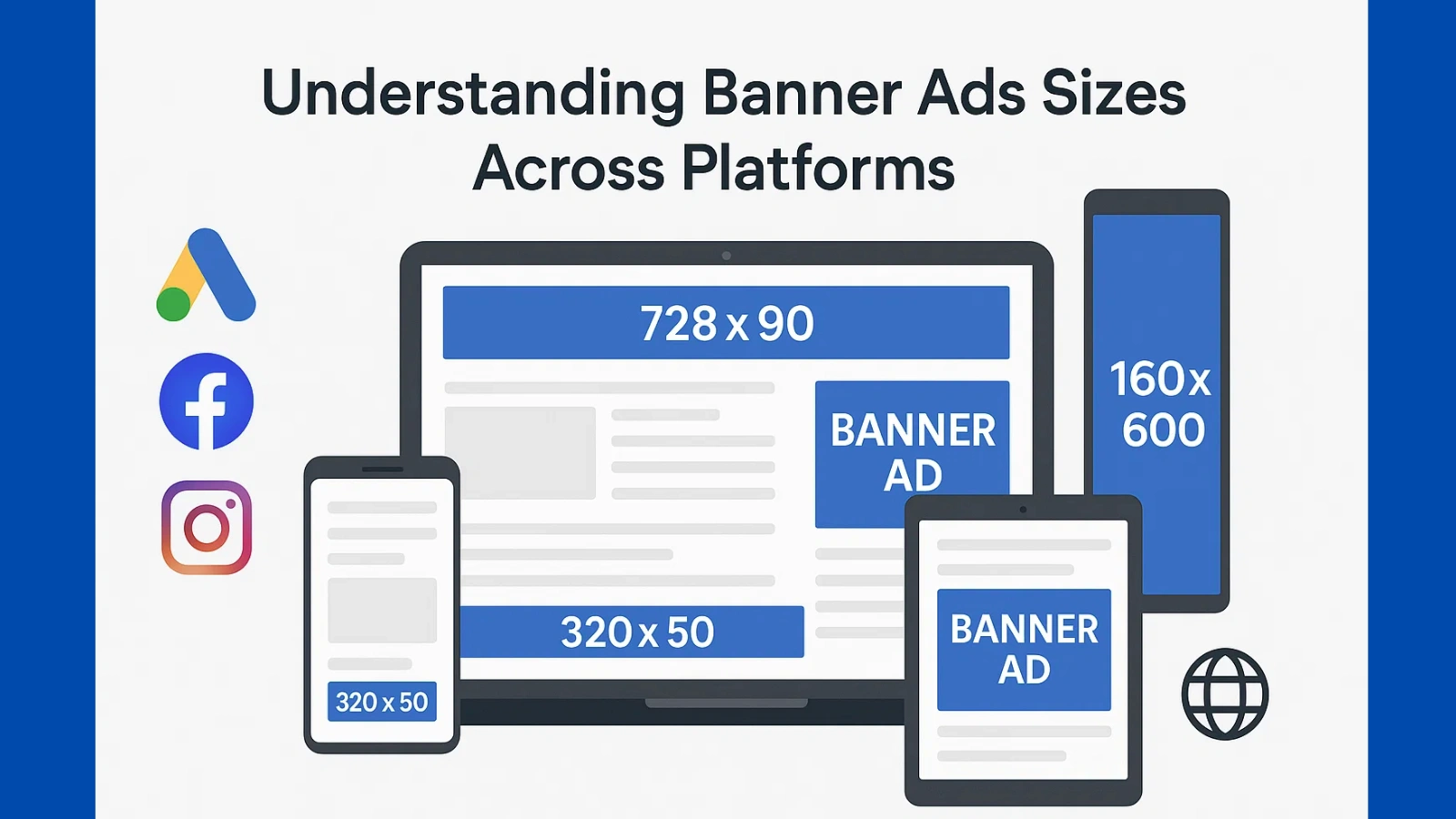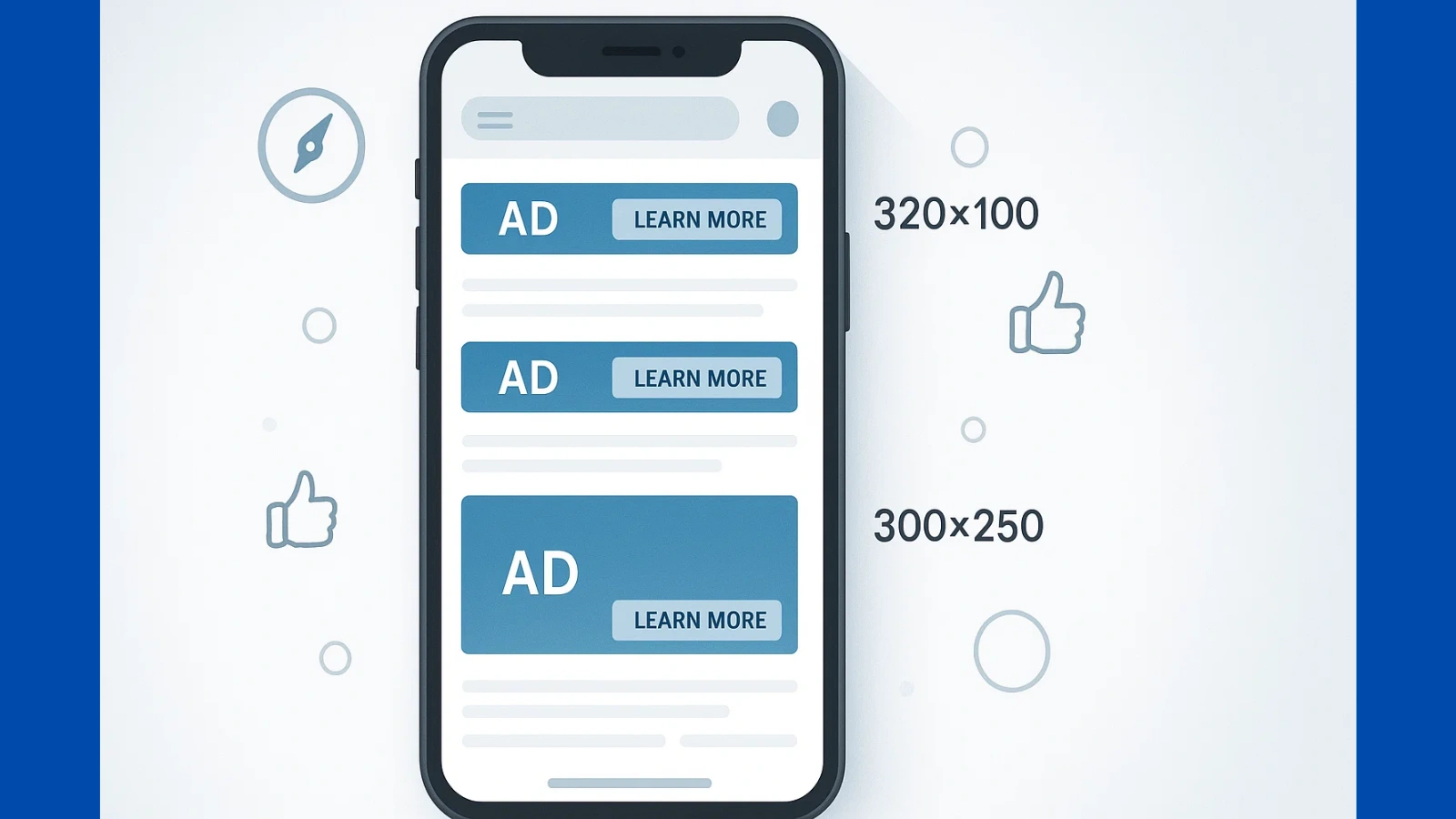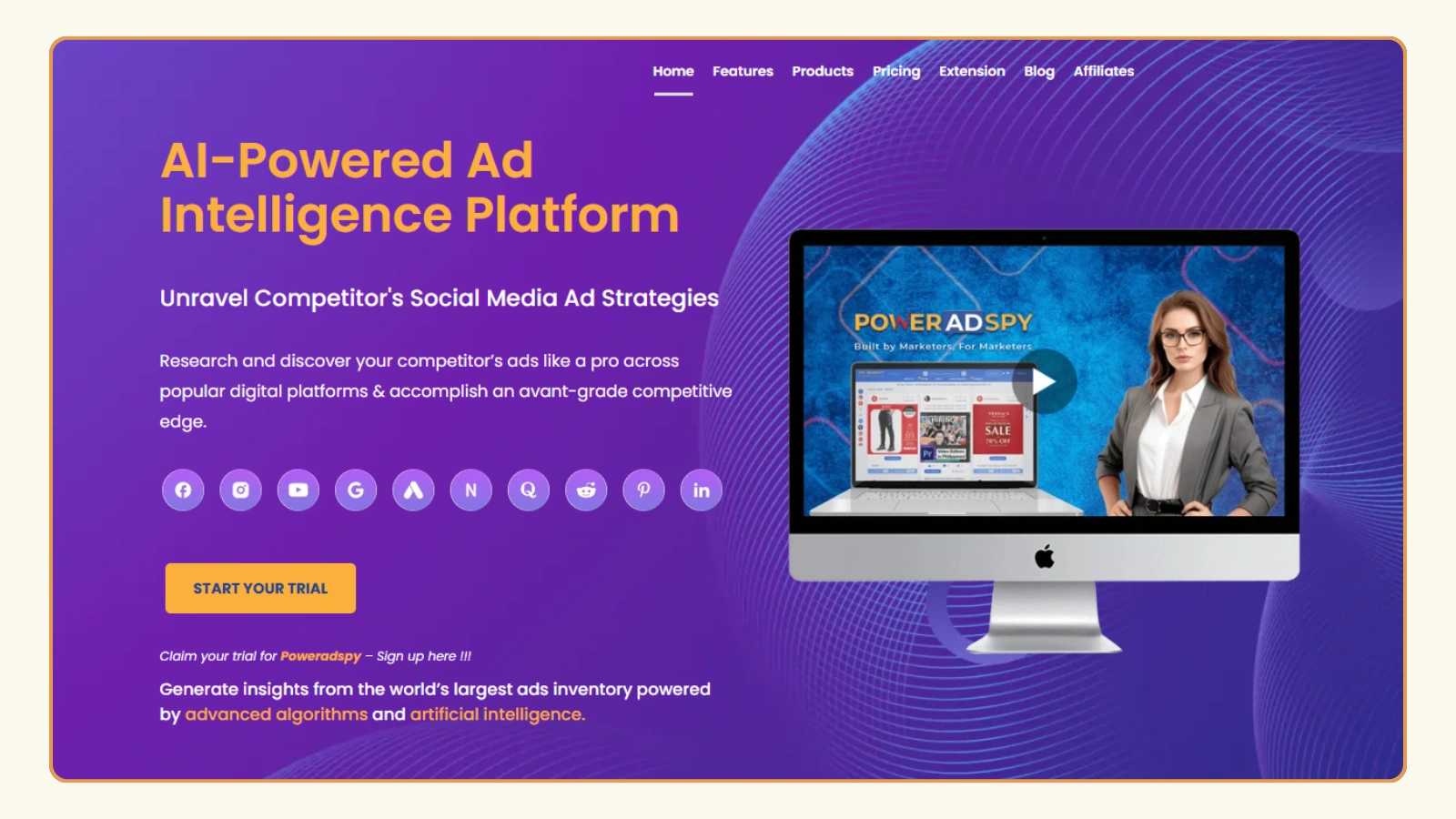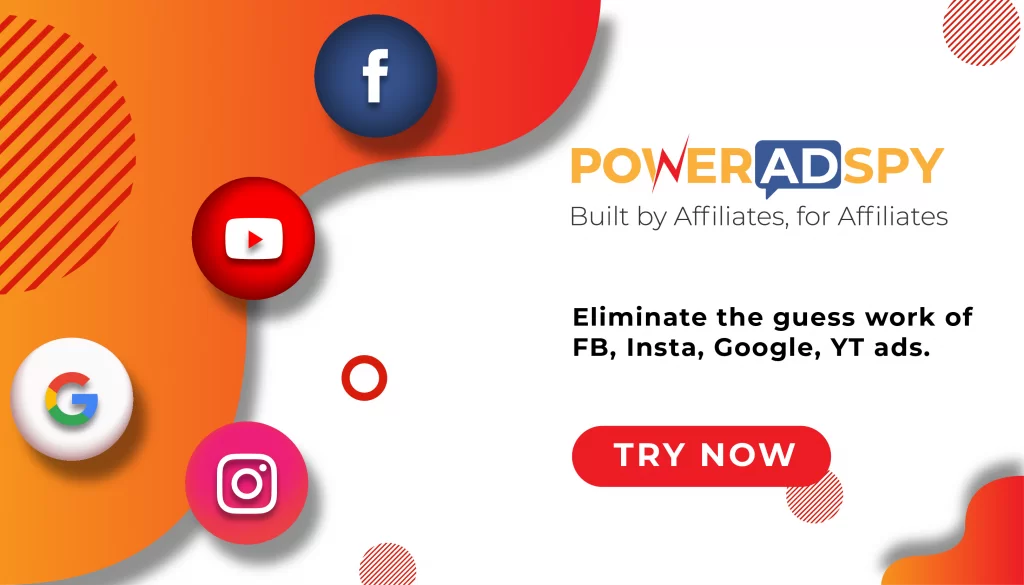How To Choose Banner Sizes That Work Everywhere?
Every successful ad campaign starts with a great idea, but its real power lies in how well it’s presented. One of the most overlooked yet critical parts of that presentation is banner sizing. Even the most compelling design can fail if it doesn’t fit the space it’s meant for. Whether you’re targeting mobile devices, desktop screens, or various display networks, using the right banner size ensures better visibility, faster loading, and higher engagement.
In this blog, we’ll break down the best banner sizes for both mobile and desktop, explain standard industry dimensions, compare how banners perform across devices, and offer expert tips to help you optimize ad formats for maximum impact.
Listen To The Podcast Now!
What Are Banner Ads and Why Are Sizes So Crucial?
Banner ads are visual-based advertisements that appear on web pages, apps, and social platforms. They aim to capture attention, convey offers, and drive clicks. However, the size of a banner plays a significant role in determining its effectiveness. An ad that looks great on a desktop may not display correctly on a mobile screen.
Advertisers need to understand that banner sizes aren’t just a matter of design preference; they directly affect click-through rates, impressions, and overall performance. The right size ensures that your message fits within platform guidelines, loads quickly, and maintains visual clarity.
A Quick Guide To Standard Banner Sizes For Digital Ads
Standard banner sizes follow globally accepted dimensions to ensure compatibility across most platforms. Here are the most common:
- Leaderboard (728×90) – Ideal for desktop header placement. This size fits neatly at the top of websites and grabs user attention immediately. You can display brand messages, promotions, or key visuals prominently. Many publishers reserve this prime spot for high-performing ads. Advertisers often choose this size for visibility and reach.
- Medium Rectangle (300×250) – Popular due to its versatility. You can place this size within content, sidebars, or even mobile layouts. It works well for both image and video ads. Many websites support this size, increasing its exposure. Brands love this format because it balances space and performance.
- Skyscraper (160×600) – Effective for sidebars. You can stretch this vertical ad along the side of a webpage. Its long shape keeps your message visible as users scroll. This format suits detailed visuals or sequential storytelling. Many advertisers choose it to complement other banner sizes.
- Large Mobile Banner (320×100) – Optimized for mobile screens. This size gives you more room for text and images than the standard mobile leaderboard. You can use it in apps or mobile websites where larger visuals boost performance. It blends well with content without appearing intrusive. You get better click-through rates with the right creative.
- Mobile Leaderboard (320×50) – Small yet effective for mobile ads. This compact size works well at the top or bottom of the screen. It loads quickly and maintains a clean user experience. You can grab user attention without disrupting app functionality. Many mobile publishers prefer this format for consistent performance.
Using these standard banner sizes gives your campaign a broader reach, better platform compatibility, and improved results.
Understanding Banner Ads Sizes Across Platforms
Each advertising platform, Google, Facebook, Instagram, and Twitter, favors specific banner sizes. Google Display Network, for instance, supports a wide range but prioritizes formats that perform well across different devices. Social platforms like Facebook and Instagram prefer square or vertical formats for mobile users.
Advertisers must match banner sizes to platform expectations. Using the right dimensions improves ad placement options and boosts performance by ensuring visual consistency.
Mobile Banner Sizes: What Works Best on Smartphones?
Smartphones account for a majority of online traffic today. Choosing mobile banner sizes that align with smaller screens is essential. The most recommended include:
320×50 (Mobile Leaderboard)
This size is compact, making it ideal for top or bottom placement on mobile screens. You can run ads that deliver a quick message without overwhelming the user. It works great in mobile apps and mobile-optimized websites. Many advertisers rely on it because of its fast loading and consistent visibility.
320×100 (Large Mobile Banner)
This size gives more room for text and visuals compared to the 320×50 format. It helps you display detailed promotions or strong CTAs without clutter. Users still enjoy an uninterrupted experience while viewing your ad. It’s perfect for branding campaigns that require more space.
300×250 (Medium Rectangle – also works well on mobile)
Originally made for desktops, this format adapts well to mobile screens. You can place it within content or in-feed, ensuring high engagement. It offers flexibility for image or video ads. Marketers love this size for its compatibility and visual strength.
These banner sizes load quickly and display well within apps and mobile browsers. You can increase interaction and keep the user experience smooth by picking the right size for the right moment.
Read More!
Why Your Business Needs To Consider Banner Ads?
Most Effective Mobile Banner Ads Sizes for Maximum Engagement
When choosing mobile banner ads sizes, it’s not only about fitting the screen; it’s about optimizing engagement. Ads that appear native and non-intrusive receive better interaction.
The 320×50 size works well at the top or bottom of an app, providing visibility without being disruptive. The 300×250 size allows more design space while still fitting mobile displays.
Consistency in using the right mobile banner ads sizes allows you to maintain brand integrity across devices while improving click-through rates.
How To Choose the Right Banner Size Based on Placement
Where your ad appears determines which banner size you should use. For top-of-page placement, 728×90 (Leaderboard) fits well. For sidebar ads, 160×600 (Skyscraper) maintains vertical visibility.
Mobile placements require compact yet visible designs. 320×100 works great at the top of the screen, while 300×250 is ideal for interstitial placements.
Knowing your placement in advance helps select banner sizes that blend into the layout naturally and encourage interaction without interrupting user experience.
Comparing Desktop vs. Mobile Banner Sizes
Desktop users interact differently from mobile users. A banner that grabs attention on a wide desktop screen might look cluttered or misaligned on mobile. That’s why it’s crucial to create banners in multiple sizes suited to each device experience.
Desktop Banner Sizes:
728×90 (Leaderboard)
This format is ideal for placement at the top of webpages. It grabs attention right away and gives space for strong branding or promotional text. You can use it to run time-sensitive offers or showcase brand messages without interfering with content. Its horizontal layout fits naturally into the desktop interface.
160×600 (Wide Skyscraper)
This vertical format fits perfectly in sidebars and scrolls with the user on some websites. It keeps your brand visible as visitors navigate the page. You can use it for branding campaigns, long-form visuals, or multi-line ad copies. Its shape stands out on content-heavy pages.
Mobile Banner Sizes:
320×50 (Mobile Leaderboard)
This is a slim banner size made for small screens. It appears at the top or bottom of mobile apps and websites. You can deliver quick CTAs or concise messages without disrupting the user experience. It’s one of the most used sizes due to its balance of visibility and simplicity.
320×100 (Large Mobile Banner)
This option gives you more space than the 320×50 while staying mobile-friendly. You can include visuals and readable text that stands out even on small screens. It’s ideal when you want your ad to feel noticeable but not overwhelming. Many mobile ad networks support this format.
300×250 (Medium Rectangle)
Though it originated for desktop, this size works well within mobile content feeds. It fits neatly between paragraphs or below videos, ensuring more views. You can use it for image-heavy ads or video clips on mobile platforms. Its versatility makes it a top pick for advertisers targeting both devices.
Adapting banner sizes based on device ensures your ads stay legible, visually appealing, and responsive. It also helps you maintain engagement and click-through rates across various screen sizes.
Read More!
Ad Creatives and Banner Dimensions: Why They Must Align
Even the most stunning ad creative can fail if the banner size distorts the design. Fonts might shrink, CTAs can disappear, or images may crop improperly.
Before designing, set your dimensions based on target placement. Create adaptive designs that stay clear, regardless of scaling. Consistency in banner sizes across your campaign helps your brand appear cohesive.
Use PowerAdSpy To Monitor Competitors Banner Ads
PowerAdSpy gives you the edge in banner ad creation by revealing which sizes, formats, and placements are working in live campaigns. Instead of relying on guesswork, you can use proven data to design banners that get clicks and conversions.
Here’s how PowerAdSpy simplifies smart banner creation:
Filter by Ad Positions
You can explore ads based on where they appear, like sidebars, mobile feeds, or header slots. This helps you choose banner sizes that perform well in specific placements, so you know exactly where to focus your design efforts.
Complete Ad Visibility
PowerAdSpy doesn’t just show the creative, it gives you full access to the ad’s live version. You can study banner dimensions, copy placement, and call-to-action usage to inspire your own high-converting creatives.
Millions of Ads from 100+ Countries
Access global advertising trends and discover the most-used banner sizes around the world. Whether you’re targeting local or international audiences, you’ll know what sizes work in specific regions.
Smart Search Filters
Find competitor ads using niche keywords, domains, or audience segments. This allows you to analyze what banner sizes your competitors rely on—and what you can improve on.
Bookmark Winning Ads
Save top-performing banner creatives to a personal library. Use this feature to build a swipe file of ads with proven dimensions and layout strategies you can revisit any time.
Insights into High-Converting Formats
Compare video and image-based banners. See which combinations and dimensions perform best, so you can experiment with the right mix for your audience.
Geo-Specific Banner Analysis
Identify which banner sizes succeed in specific countries or regions. If you’re running localized campaigns, this data ensures your creatives are region-optimized.
With PowerAdSpy, you no longer need to experiment blindly with banner sizes. Every design decision from format to dimension is backed by data from real, successful campaigns.
Top Mistakes to Avoid When Choosing Banner Ads Sizes
Even the best-designed ads can fail if the size doesn’t suit the platform or audience. Avoid these common mistakes to make sure your banners work as intended:
1. Using One-Size-Fits-All
Don’t assume a banner that looks great on desktop will work on mobile. Screen dimensions and user behavior differ drastically. A 728×90 leaderboard may look perfect on a desktop but appear cut off or unreadable on a phone. Always design separately for mobile and desktop formats to avoid wasting impressions and ad spend.
2. Ignoring Platform Guidelines
Each advertising platform recommends specific banner dimensions for best performance. Facebook, Google Ads, and programmatic platforms all prioritize different sizes. If you skip these guidelines, your banner might be rejected or downgraded in visibility. Review each platform’s specs before uploading creatives.
3. Overloading Creatives
Trying to cram too much text, too many images, or multiple CTAs into a small banner reduces its clarity. Especially on compact sizes like 320×50, every pixel matters. Keep messaging focused and visuals clean to grab attention quickly and deliver impact in seconds.
4. Skipping A/B Testing
You can’t rely on assumptions about which banner sizes work best. A/B testing different dimensions reveals real performance data. One size may drive higher CTRs on one audience segment, while another might convert better elsewhere. Test regularly to find your winning size.
5. Lack of Responsiveness
Users access websites through a mix of desktops, tablets, and smartphones. If your banner doesn’t automatically adjust or isn’t tailored to screen width, it could distort or load incorrectly. Always design banners with responsiveness in mind, or provide multiple size variants to match screen types.
Tips To Optimize Banner Sizes For Faster Loading and Better UX
Speed and clarity matter in banner advertising. A well-optimized banner not only loads fast but also delivers a smooth user experience. Here’s how to get it right:
1. Compress Files Without Affecting Visual Quality
Shrink your image file sizes using tools like TinyPNG or Adobe Media Encoder without losing clarity. Smaller file sizes load quicker and reduce bounce rates. Always preview your compressed file to ensure colors, fonts, and graphics remain sharp. Efficient compression leads to faster ad delivery and better impressions.
2. Use Standard Banner Sizes for Universal Compatibility
Stick to widely accepted sizes like 300×250, 728×90, or 320×50. These dimensions are supported across most ad networks and devices. Using standard sizes ensures smooth integration with websites and apps, avoiding rendering issues. You save time and increase reach when your ads fit perfectly everywhere.
3. Avoid Rich Media Overload—Keep Banners Light and Clean
While animation and video can boost engagement, excessive effects slow down load times. Avoid autoplay videos or heavy animations in smaller banners. Simpler banners with static or minimal movement often perform better. Focus on clean design and sharp messaging for faster rendering.
4. Use Vector or Adaptive Designs for Sharp Visuals at All Sizes
Create banners in scalable formats like SVG or use responsive design techniques. These ensure your visuals remain crisp on high-resolution screens without bloating file sizes. Adaptive designs adjust automatically to fit various screen widths, improving user experience across all devices.
5. Host Creatives on Reliable Servers to Prevent Loading Lags
Your ad’s server speed affects how fast your banners appear. Use trusted hosting platforms or content delivery networks (CDNs) to serve creatives without delay. A reliable server ensures consistent uptime, quick delivery, and smooth performance, especially during traffic spikes.
Final Thoughts
Success in advertising doesn’t come only from good copy or design it also depends on delivering the message in the right banner sizes. Whether you’re running mobile ads, targeting desktop users, or experimenting with placements, choosing the right dimensions is non-negotiable.
Combine your creative skills with real-time data and competitive insights. With tools like PowerAdSpy, you can skip the guesswork and launch banners that resonate, engage, and convert, no matter the platform or screen size.
FAQs
- What are the most commonly used banner sizes?
The most popular banner sizes include 728×90 (Leaderboard), 300×250 (Medium Rectangle), 160×600 (Skyscraper), 320×50 (Mobile Leaderboard), and 320×100 (Large Mobile Banner). These sizes work well across most advertising platforms. - Why do banner sizes affect ad performance?
The right banner size ensures better placement, faster loading, and more visual clarity, all of which contribute to higher engagement and better ad performance. - How do I choose between desktop and mobile banner sizes?
Base your choice on your audience’s primary device. If they’re mobile users, go with 320×50 or 300×250. For desktop audiences, 728×90 and 160×600 are ideal. - Are standard banner sizes supported on all platforms?
Most ad networks and social platforms support standard banner sizes, making it easier to run cross-platform campaigns without resizing every creative. - Can I test different banner sizes in one campaign?
Yes. A/B testing different banner sizes helps identify which dimensions perform best for your audience and ad placements.

